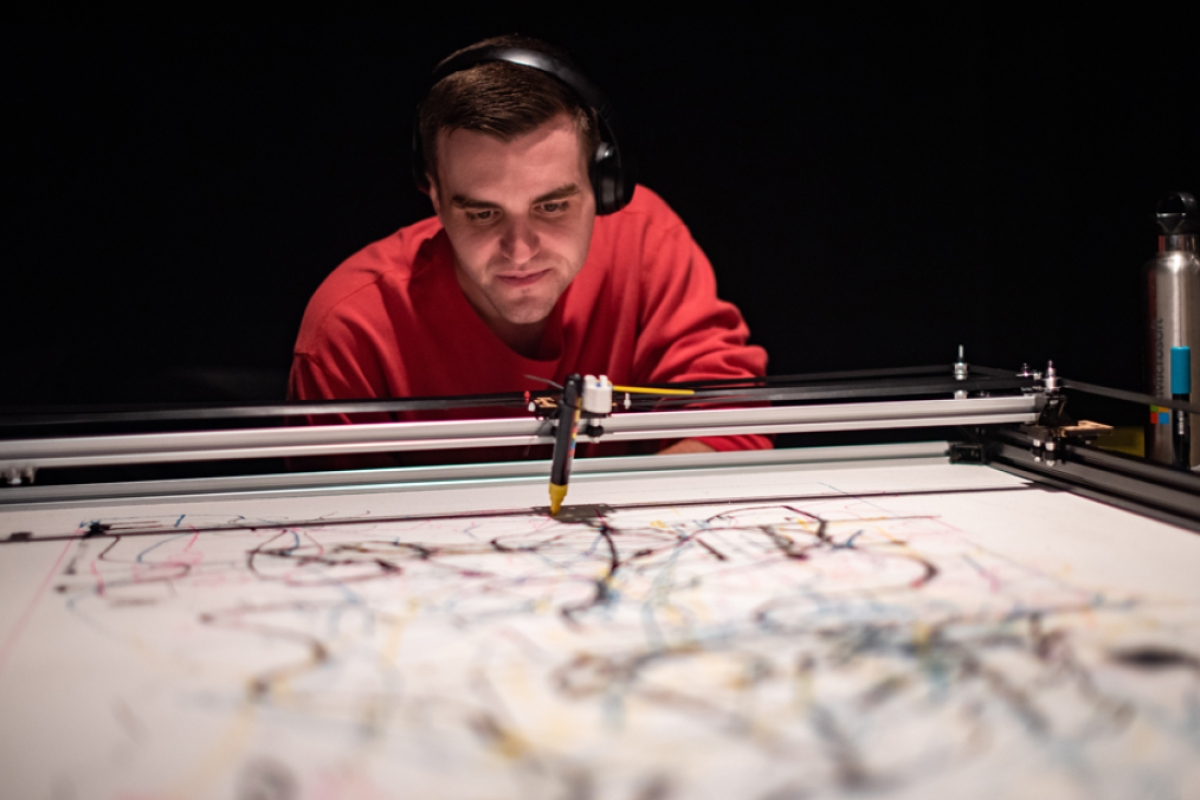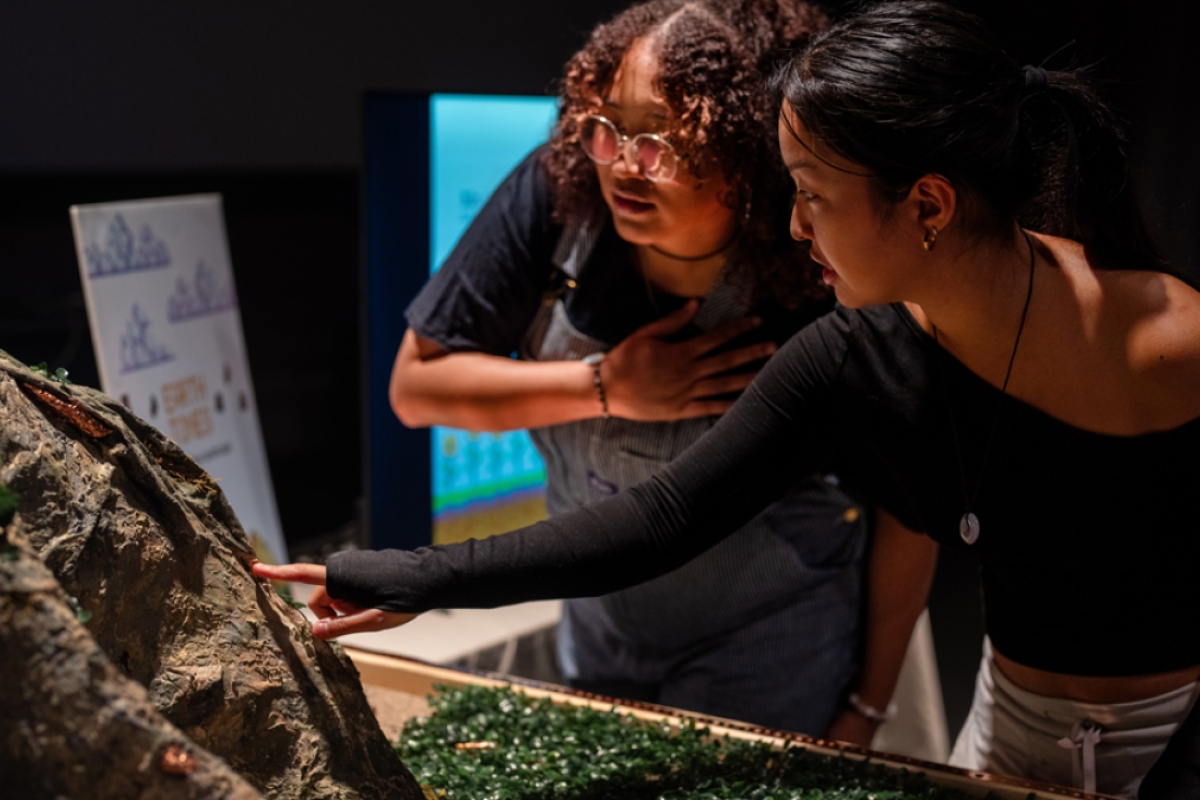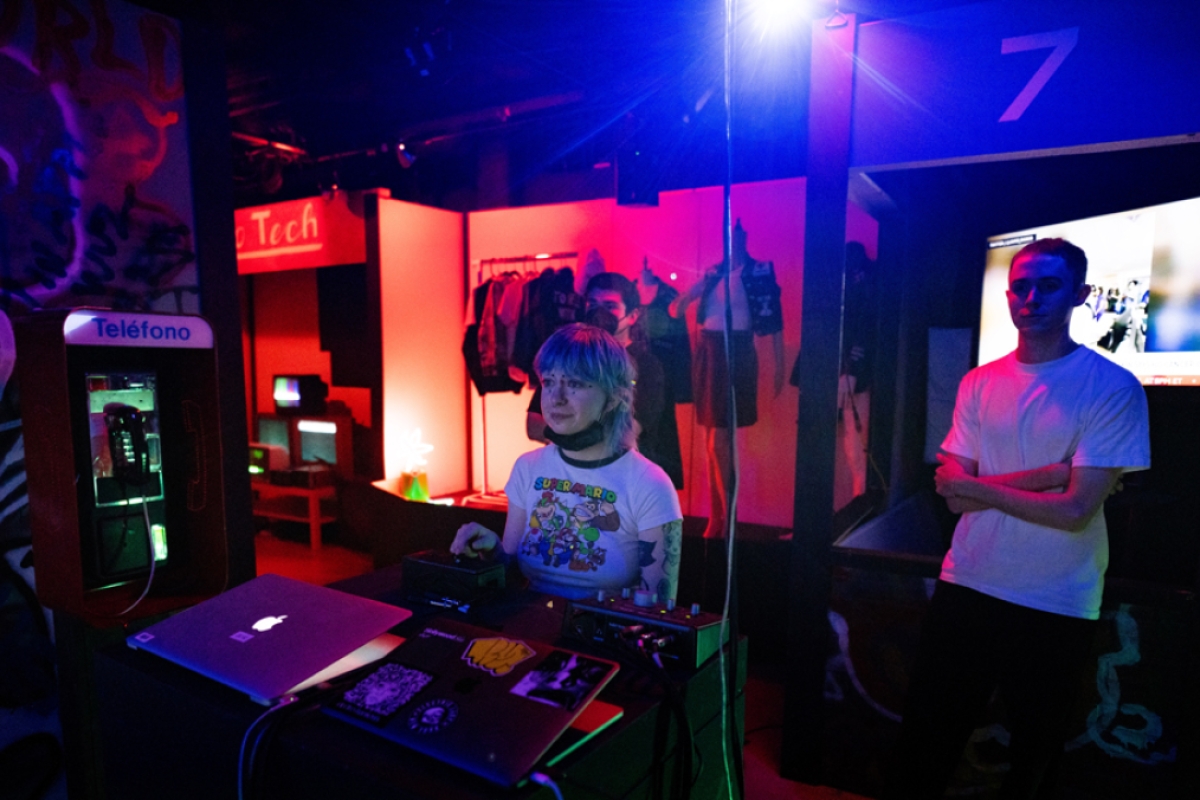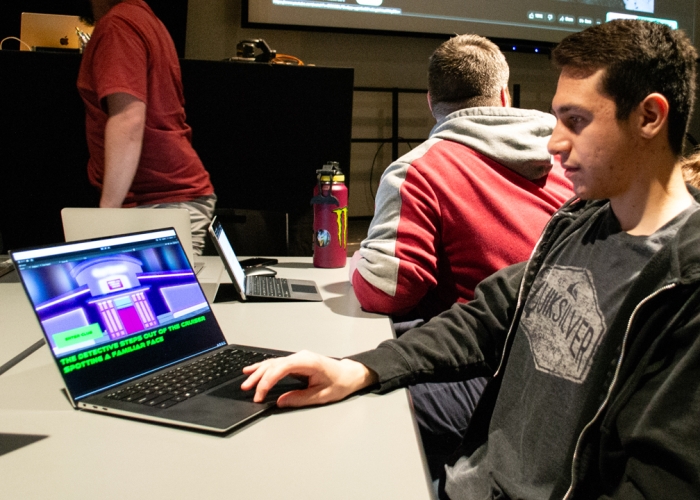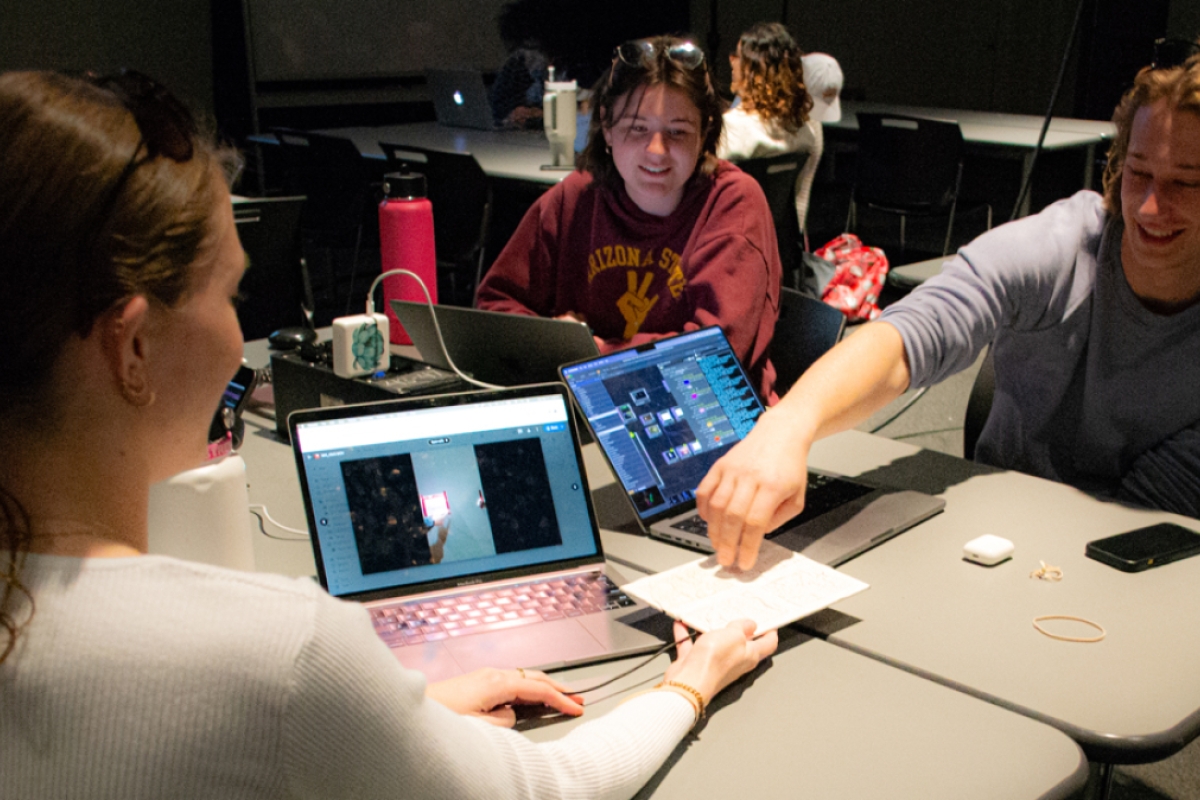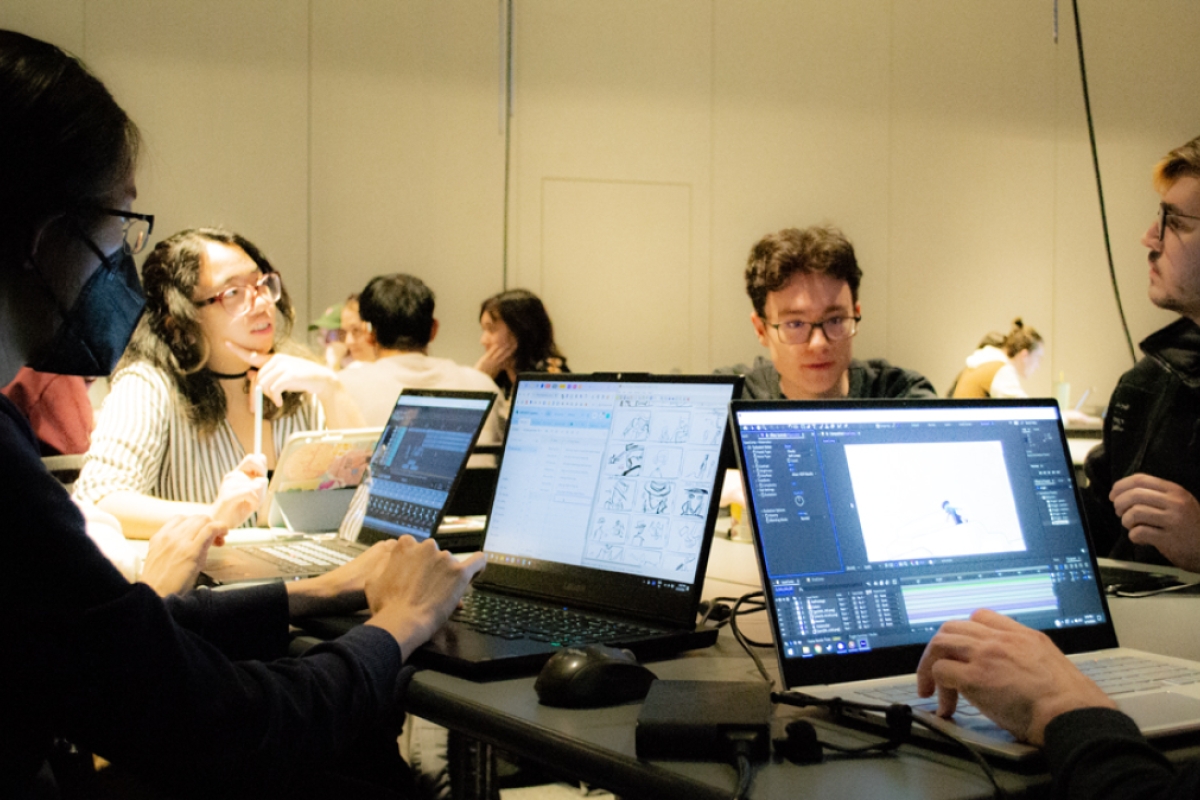A massive unveiling of creativity
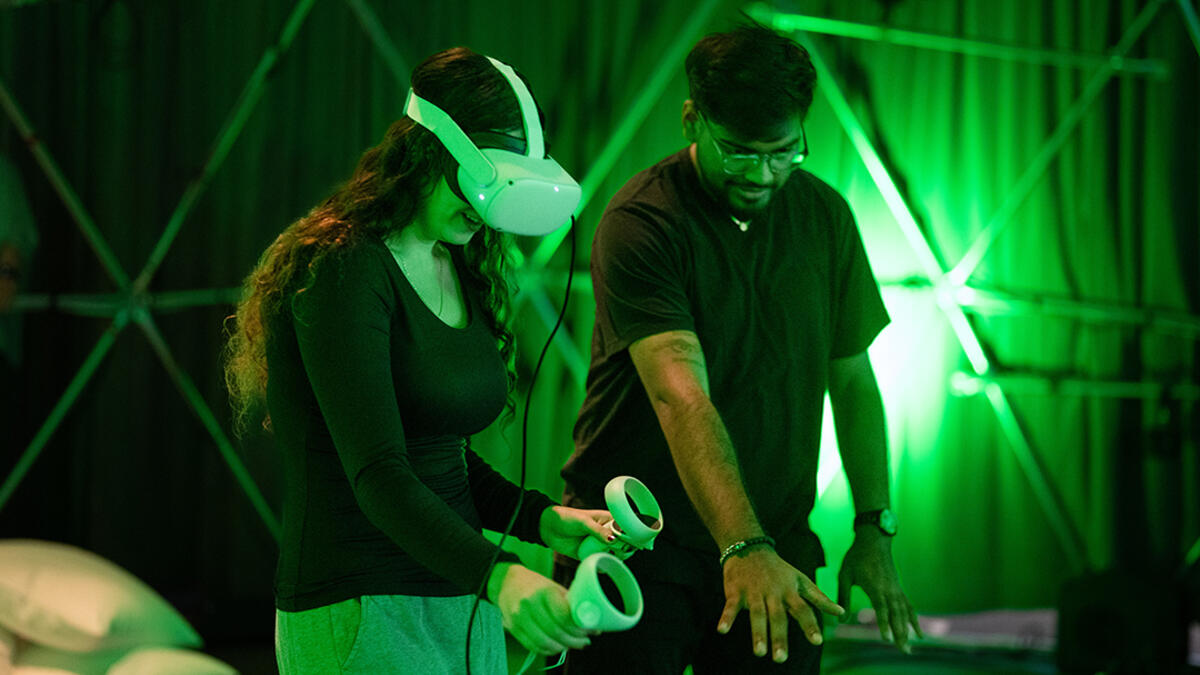
Graduate student Calvin Stanley (right) showcases an interactive virtual reality project inside the 5th Order Ambisonic Dome of the School of Arts, Media and Engineering in fall 2023. Photo by Laura Segall
On Friday, April 26, the School of Arts, Media and Engineering will host its second Media Arts and Sciences Spring Showcase under its revised program name. Formerly known as the Digital Culture Showcase, this event spotlights a variety of unique and innovative projects developed by undergraduate students in their capstone courses.
The showcase is open to the public, and visitors can expect to see innovative ideas, prototypes, demonstrations and artworks incorporating cutting-edge technologies that invite user interaction with fully developed video games and virtual reality experiences. This showcase is poised to exhibit the mission and charter of ASU while embodying the goals and values of the Herberger Institute for Design and the Arts.
“Our spring showcase will involve projects from a diverse range of students, with a vast range of life experiences and backgrounds, who are leveraging emerging technologies for expanding human expression and also thinking about use of technology in the public interest,” said Pavan Turaga, director of the School of Arts, Media and Engineering.
“I am most excited about how our students have truly embodied our mission of advancing 'technofluency,' including developing games, exploring artificial intelligence, 3D film, immersive experiences, audio-visual installations, consumer apps and popular media products.”
Visionary professors lead and develop the showcase courses. Professors DB Bauer, Luke Kautz and Jaime Kirtz, for example, each offer a unique perspective, and this welcomes collaboration between the student teams and mentors. Their mentorship through the capstone studies is a pivotal final lesson for media arts and sciences undergraduates.
“At the start of the year, we do a myriad of in-class exercises, discussions and brainstorming sessions, which both lets the students get to know each other and generates countless project ideas,” Kirtz said.
“For example, in one activity, we asked students to re-imagine their project in an entirely different medium. To do so, we gave out cards with the different mediums on them. One group who planned to make a video game received ‘sculpture’ as their medium. In response, they came up with the idea of a sculpture as the game controller. It was so well received that they ended up integrating it into their project as it made their game unique and interactive as well as emphasized the major themes in the game on a meta level.”
Students with different education backgrounds from different fields collaborate on these projects. Each group member has a specific role necessary to make a successful project, and they are all working together to create a final product that will showcase understanding of media arts and sciences. The students said they are excited to share their knowledge with their peers as well as receive feedback from members of the public and the ASU community.
“I would say that the story, art and gameplay are among my favorite aspects that I am excited for people to see,” said Joseph Fabian, a senior in the media arts and sciences program. “This is what people will see the most and what people will remember as opposed to a line of code that was written. Seeing the finished product with players piecing together the clues of this mystery and ultimately making their final decision, whether it be correct or not, will be the most satisfying part of the game development process.”
Fabian’s team is presenting their project, “Hypnos File,” a 2D neo-noir murder-mystery style visual novel that visitors can experience through gamification. The project incorporates computer coding, narrative, visual design and much more.
Media arts and sciences undergraduates are also encouraged to investigate, through student collaboration and feedback from their professors, different aspects of digital culture and portray their discoveries through art. Visitors can expect to see tangible media on display as art installations or presented for consumer sales and marketing.
“Our concept was formed when we merged different skills and ideas from our group members,” said senior Paige Kaylor. “Within our group, the majority of us wanted to create some kind of technical installation, thus giving 'Sithurism' its base foundation. It contributes to allowing participants to truly interact with an artwork that, if they were in a different setting, would not have the opportunity to interact with.
"We wanted to allow the community to gain a small understanding of how closely related digital culture and the arts can be by merging technology and art into our installation.”
Kaylor is part of a collaborative group working on “Sithurism,” a full-scale interactive art installation that invites the audience to engage with an artwork as a way of changing the environment through sensors that control various audio-visual elements within the installation.
Reflecting the ethos of the School of Arts, Media and Engineering, which prepares individuals to achieve technofluency, students collaborate across disciplines within the focus areas to acquire vital talents in teamwork. Some are musicians, others are theater performers, and some are engineers or learning robotics.
Senior Alex Vuong is working in animation. His team of seven students is creating a 3D-animated short film with a working title of "WEAVER." The team uses software like Blender and After Effects to produce their media, which will be finalized as a four-to-five-minute animated film that will also be featured at the ASU Animation Showcase in early May at ASU's MIX Center.
“We hope to inspire anyone who's interested in animated storytelling, proving that it's possible to create short films using software that is readily available to the public,” Vuong said. “We strongly believe that animation is an art form that is more accessible than it first appears. We also want our audience to come away with a sense of empowerment, and we hope that they're able to identify with the struggles and triumphs of our characters.”
More Arts, humanities and education

ASU professor's project helps students learn complex topics
One of Arizona State University’s top professors is using her signature research project to improve how college students learn science, technology, engineering, math and medicine.Micki Chi, who is a…

Award-winning playwright shares her scriptwriting process with ASU students
Actions speak louder than words. That’s why award-winning playwright Y York is workshopping her latest play, "Becoming Awesome," with actors at Arizona State University this week. “I want…

Exceeding great expectations in downtown Mesa
Anyone visiting downtown Mesa over the past couple of years has a lot to rave about: The bevy of restaurants, unique local shops, entertainment venues and inviting spaces that beg for attention from…


